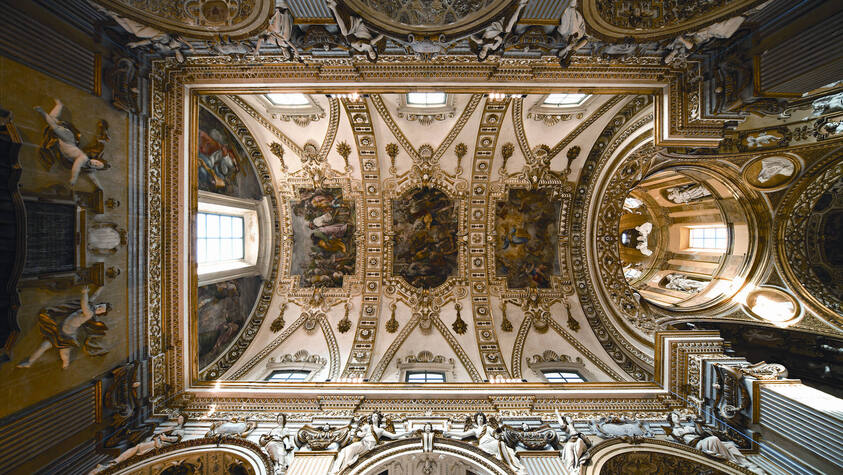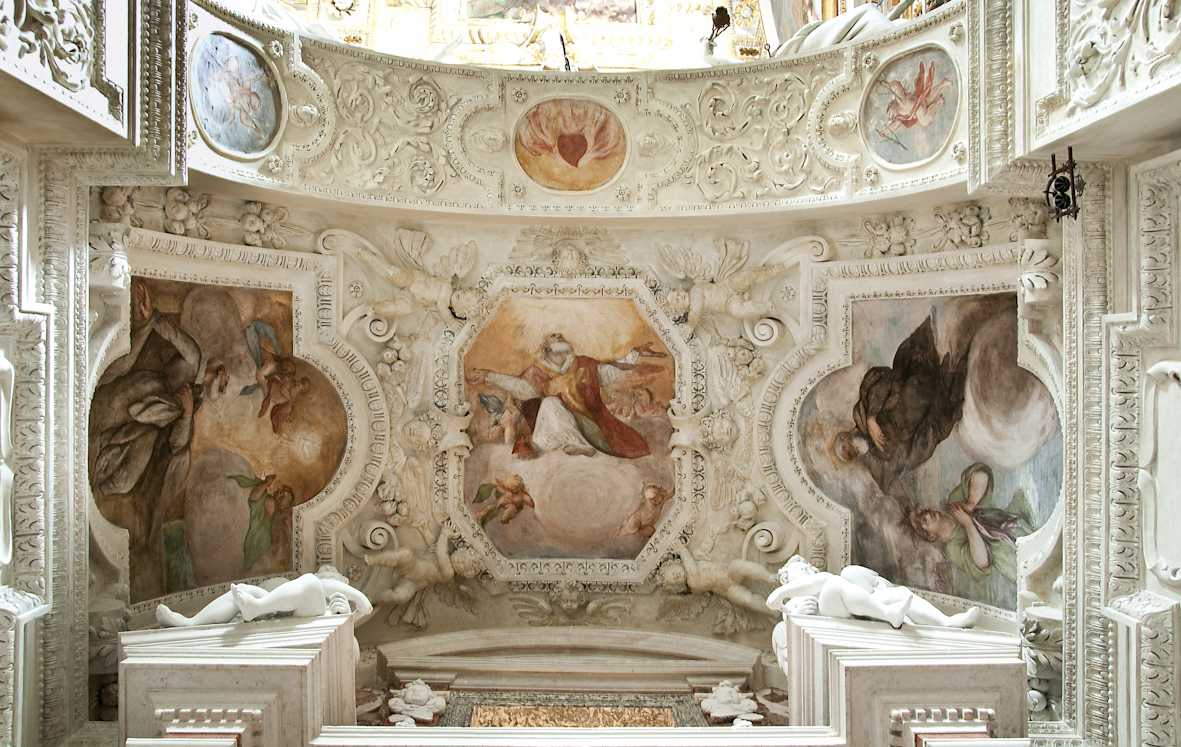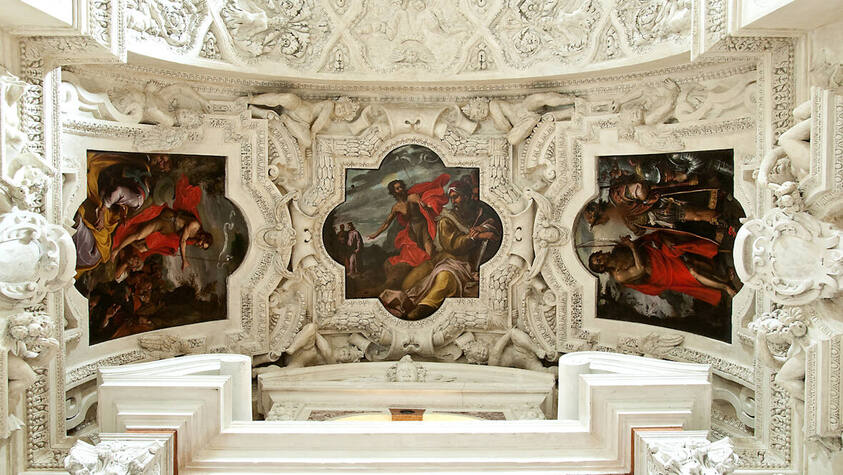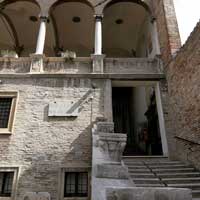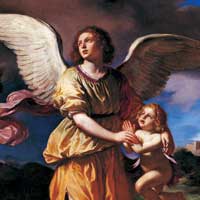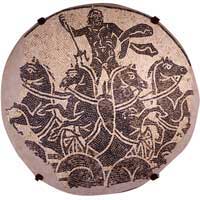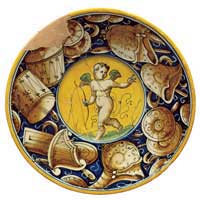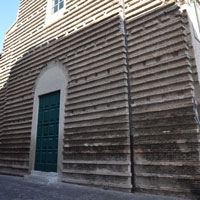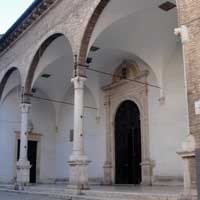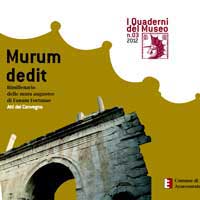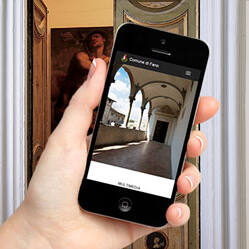The church is located on the site of the ancient ditch (ad vallum) which separated the Roman town from the Adriatic coast. A pre-existing church on the same spot, dating from the Middle Ages, was pulled down in 1609 when the Oratorian Fathers arrived.
The plan of the present church, which, like the previous one, is dedicated to Saints Peter and Paul, was proposed by Giambattista Cavagna, an architect from Rome: it was a plan on the Latin cross, with inscribed transept, one nave, six chapels and a cross vault. The church was consecrated in May 1617. At the time, however, it had no decorations either on the outside or on the inside.
The exterior of the church has never been covered with the planned stone facing, whereas the inside became over the years a rich gallery of marbles, stuccoes, golden objects and paintings, thus making the church one of the most remarkable examples of Baroque style in the Marche region. The first artists to work here, between 1618 and 1620, were Pietro Solari, a stucco decorator from Rome, who also decorated the Cappella Nolfi in the cathedral of Fano, and Antonio Viviani, called “the Deaf”, a painter from Urbino, who is the author of the frescoes portraying the life of Saint Peter.
The ceiling was painted between 1699 and 1700 by Lauro Buonaguardia, an artist from Bologna. The decoration of the ceiling is an outstanding example of Baroque painting.
The main altar and the six side chapels were decorated with what art historian Luigi Lanzi had called “a rare gallery of paintings”. The most beautiful works are those by Guido Reni, Guercino, Simone Cantarini (from Pesaro) and G. F. Guerrieri (from Fossombrone). Most of these rare paintings are currently housed and displayed at the picture gallery (Pinacoteca) of the Palazzo Malatestiano. This Oratorian church, in which white and gold are the prevailing colours, is one of the best examples, in the Marche region, of the fusion between architecture, sculpture and painting. It exemplifies how the language of figurative arts of the 17th century evolved here in the region through the influence of artists from Rome and Bologna.

